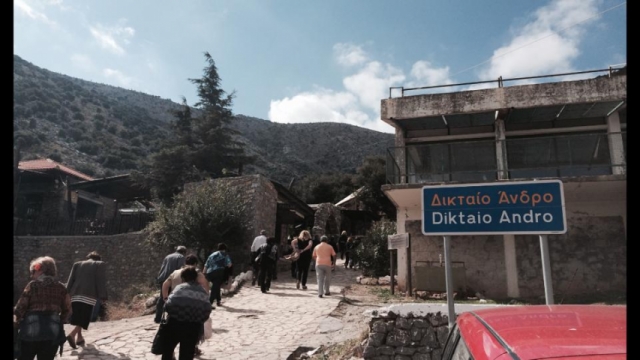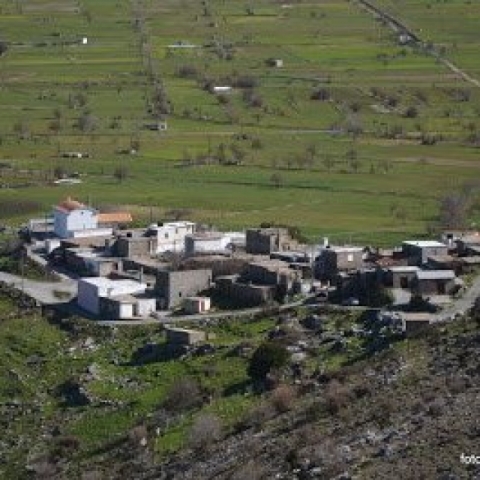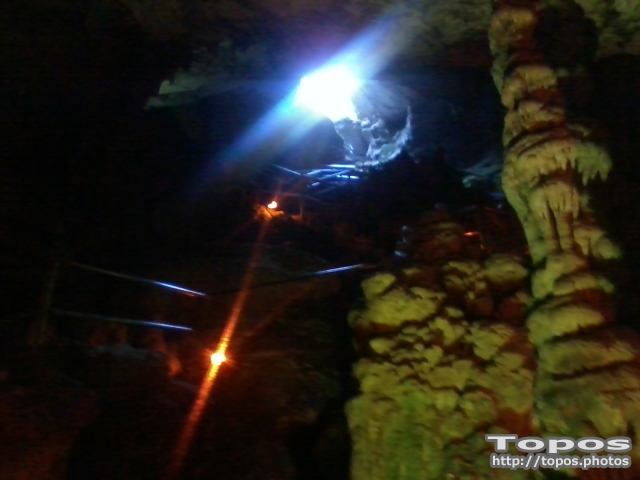Press here.
Places near Parking
Psychro village is one of the 18 villages of Lassithi Plateau, and located southwest of the plateau at the foot of Mountain Touba Moutsouna.
It is perhaps the best known village of the plateau since above it there is the famous cave Dikteon Andron where according to mythology, the Olympian god Zeus was born. The Psychro village altitude is 828 meters and dates back to the Venetian period, like the other villages of the plateau.
The village despite the few inhabitants which according to the census of 2011 amounted to 133 inhabitants, benefits of the presence of the active Cultural Association of village which organizes numerous of cultural events and ensures the preservation of local traditions and the cleanliness of the village.
Dikti or Dicte or Lassithiotika Ori, is a mountain range on the east of the island of Crete in the prefecture of Lassithi. On the west it extends to the prefecture of Heraklio. According to the Greek Mythology, Zeus was reared on this mountain in a cave called Dikteon Andron (Psychro Cave). On the north of the main massif, the plateau of Lassithi is located.
The topology of the mountain range is rich with a lot of plateaus (Lassithi, Katharo, Omalos Viannou, Limnakaro), valleys and secondary peaks. Some important peaks are Spathi 2148m, Afentis Christos/Psari Madara 2141m, Lazaros 2085m, Katharo Tsivi 1665m, Afentis 1571m, Selena 1559m, Platia Korfi 1489m.
The main masif forms a horse-shoe around the valley of Selakano. Large part of the mountain area, including the Selakano valley, are forested with pines (pinus brutia), kermes oaks (quercus coccifera), cypresses (cupressus sempervirens), holm oaks (quercus ilex) and Cretan maples (acer sempervirens). The fertile valleys and plateaus of Dikti/Dicte are of significant importance in the local economy.Dominant feature of Dikti is the Lasithi Plateau, the largest and prettiest plateau in Crete. It is a place with a long history. Diktaion Antron, is located here, a cave where -according to the Mythology- Zeus was born. In a different myth, Dias (Zeus) was born in Idaion Antron in Mt Idi. A third myth is a compromize of the two, claiming that Zeus was born in Dikteon Andron but raised in Idaion.
The Lasithi Plateau is a nice place for pleasant excursions. If you are more ambitious and want to climb to the summit of Mt Spathi, then ask at the village of Agios Georgios for the path leading to the small plateau of Limnakaro. The distance is 2 hrs long.
At Limnakaro there is a dirty track leading to the shelter of the Mountaineering Club of Lassithi (30 minutes). Do not follow this road; try to locate the E4 path which leads to the top. The ground is not very solid, and special care is necessary. Go all the way up to the crest of the mountain and then keep moving to the left for the next 2 hours.
Agios Charalambos is located about 52 km from the town of Agios Nikolaos, on the Lassithi Plateau. It is a small village with about 60 inhabitants, which took its name in 1960 from the church of the village.
In the area there is a section of an old Byzantine church dedicated to Saints Sergio and Bacchus.









